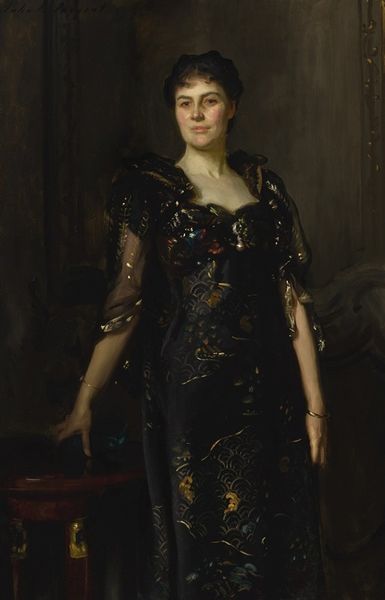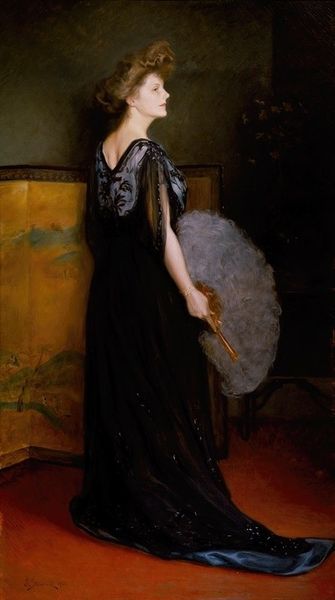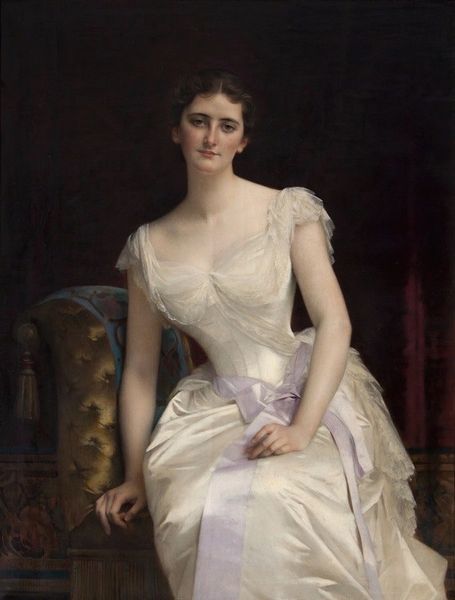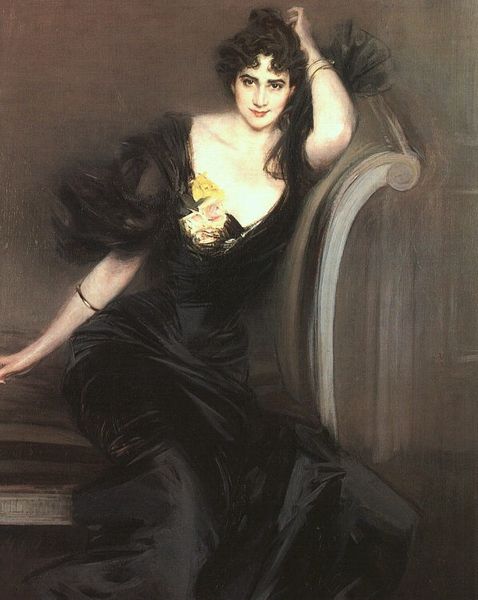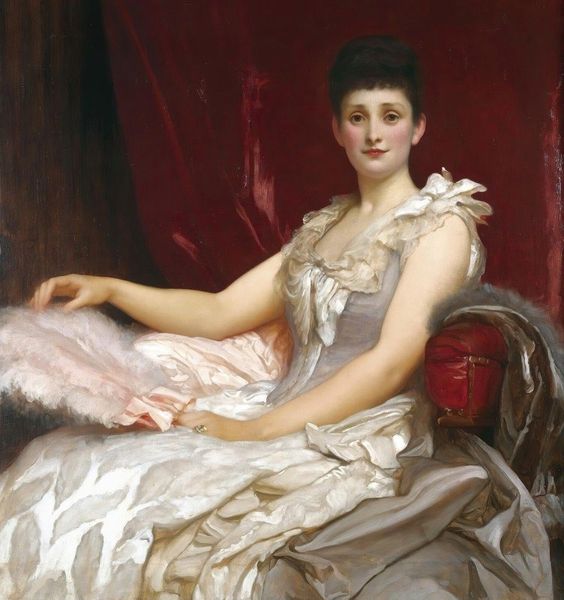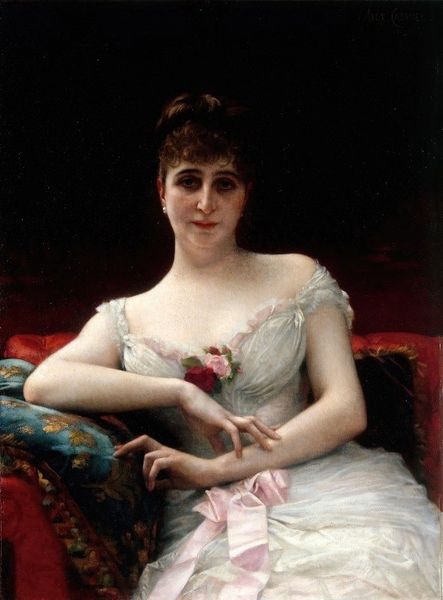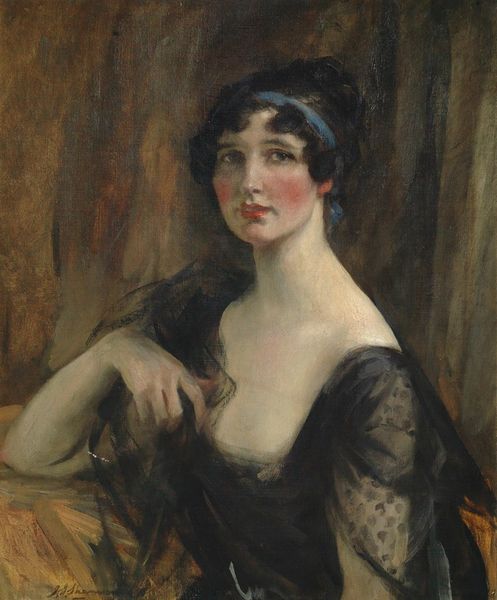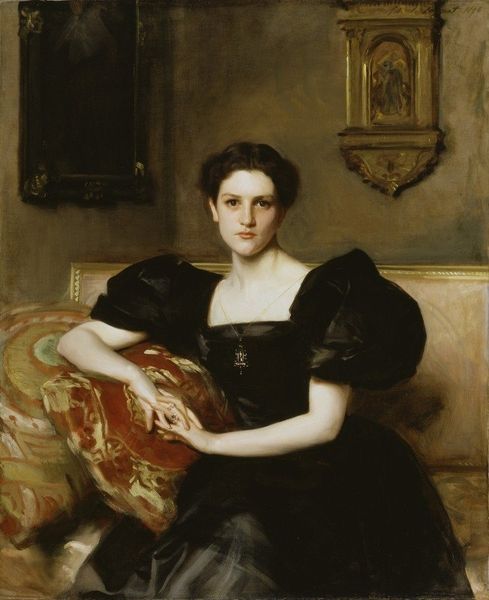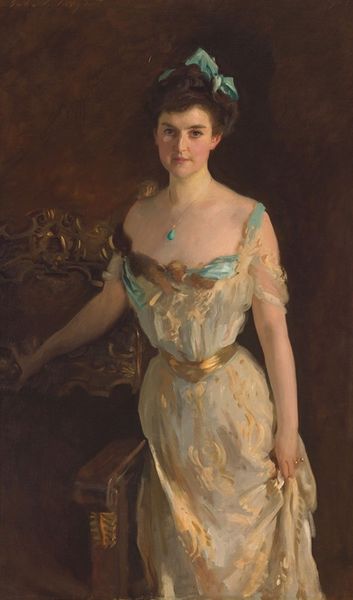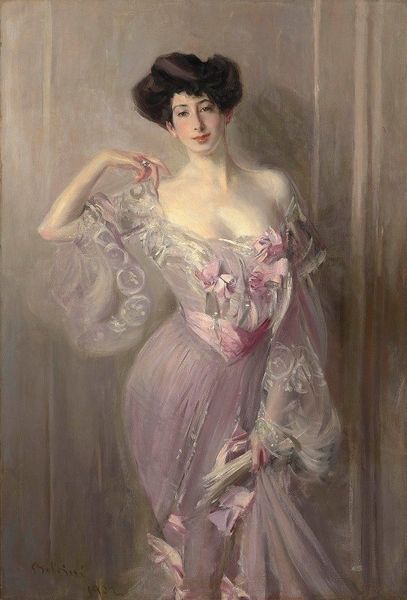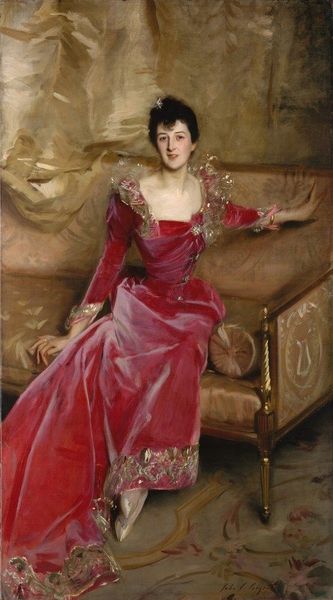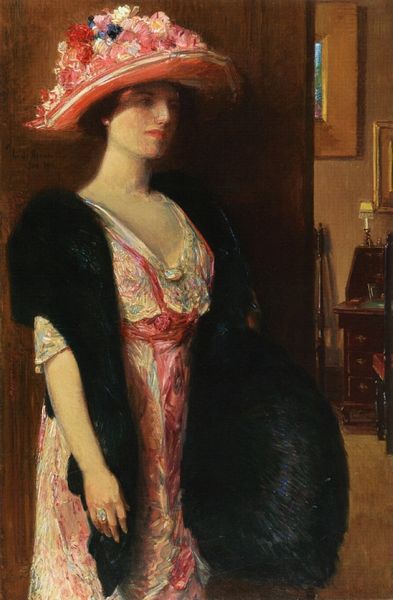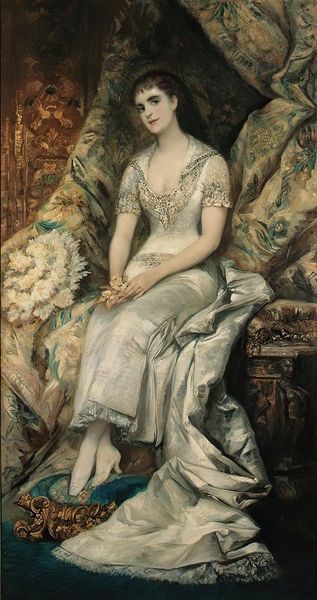
painting, oil-paint, impasto
#
portrait
#
figurative
#
fancy-picture
#
painting
#
oil-paint
#
impasto
#
facial portrait
#
academic-art
#
portrait art
#
realism
Copyright: Public Domain: Artvee
Curator: Sargent's oil painting, Mrs. John C. Tomlinson, has a real stillness to it, doesn't it? Almost as if the subject is pausing mid-conversation. Editor: It strikes me as remarkably poised. The crimson curtain in the background is a dramatic backdrop against the black dress, although you lose the texture in the reproduction, seeing the brushwork, the impasto, you see more detail than the photograph suggests. Curator: The symbolism is fascinating here. Sargent clearly positions Mrs. Tomlinson in a space of luxury and cultivated taste. The fireplace mantle acts as a literal foundation beneath her stance; what kind of support systems enabled this portrayal, do you imagine? Editor: Well, it's an academic style and from the time it takes to construct that image, the underpainting, the layering... We're talking about many studio hours, not just for the artist but probably for the sitter as well. How often did she have to come, what were the fabrics like to wear in those conditions for hours and hours? That black gown must have been weighty. Curator: The choice of the black gown seems deliberate, offering her silhouette up as a figure of fashionable mourning, perhaps? I see the faint, ruffled white accents near the décolletage that give us a peek behind the formality. The artist lets her hold a bit of the red curtain too; her ladyship is drawing back the velvet as she stands before a marble fire surround and an enormous framed mirror. What does that mirror mean here? Editor: Maybe the mirror suggests something about how the elite saw themselves: reflected, celebrated, magnified. As a viewer, it's difficult not to consider who could commission this. It also raises many questions. For instance, who produced these materials; where did they come from? This aesthetic requires tremendous resources in both material and social currency. Curator: All of this detail comes together to capture an age in transit—the transition of Gilded Age sensibilities bleeding into new social frameworks. Thanks for opening that up in ways that I would not have expected, Editor! Editor: Indeed, quite telling. It seems this work continues to provoke necessary discussions.
Comments
No comments
Be the first to comment and join the conversation on the ultimate creative platform.
